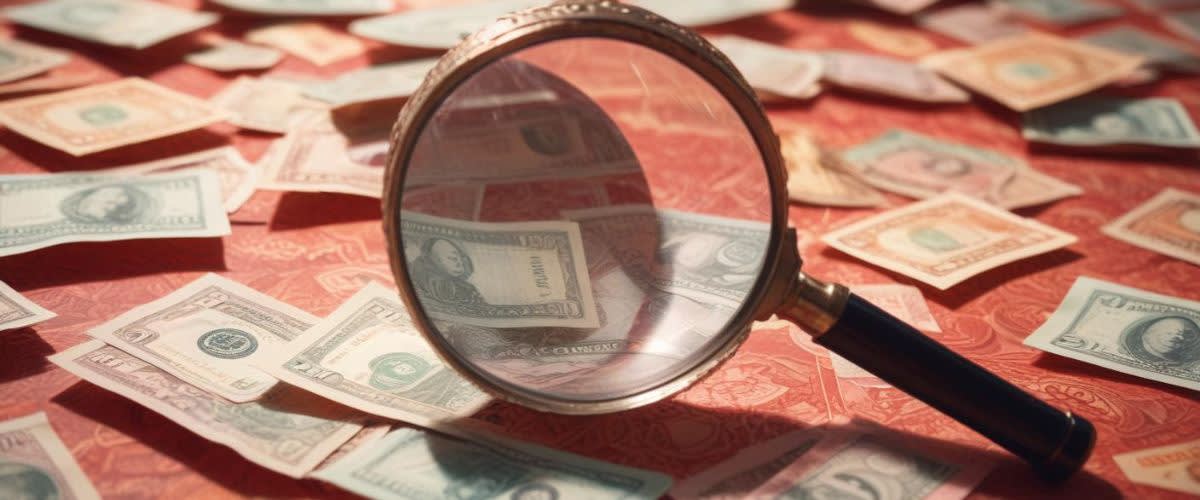Speculative bubble is an economic phenomenon that has intrigued economists, investors, and everyday individuals alike. Imagine a world where prices soar to unimaginable heights, driven not by rationality or intrinsic value, but by an intoxicating mix of greed, hype, and the human desire for quick fortunes. In this realm, investments become a thrilling roller coaster ride, with no solid ground to anchor their worth.
Speculative bubbles have the power to captivate and confound, attracting eager participants from all walks of life. These economic anomalies, fueled by irrational exuberance, create a seemingly magical landscape where the ordinary rules of supply and demand lose their grip. Assets, be it stocks, real estate, or cryptocurrencies, experience an otherworldly surge in value, transcending any fundamental justification. And just as swiftly as they rise, they inevitably come crashing down . But what exactly is a speculative bubble?
Experience Skilling's award-winning platform
Try out any of Skilling’s trading platforms on the device of your choice across web, android or iOS.

What is a speculation bubble?
A speculative bubble, also known as an economic or asset bubble, refers to a situation in financial markets where the prices of certain assets, such as stocks, real estate, or cryptocurrencies, become significantly inflated beyond their intrinsic value. In a speculative bubble, the prices are driven primarily by investor optimism, euphoria, and the anticipation of further price increases, rather than the underlying fundamental value of the asset.
Why does it happen?
Speculative bubbles may occur due to a combination of psychological, economic, and market factors. Here are some key reasons why speculative bubbles happen:
Herd mentality
Human psychology plays a significant role in the formation of speculative bubbles. People tend to be influenced by the actions and opinions of others, especially in uncertain situations. When a particular asset or market segment starts experiencing rapid price increases, the fear of missing out (FOMO) drives many investors to join the frenzy, creating a self-reinforcing cycle of buying and rising prices.
Investor optimism and euphoria
During a bubble, investors become excessively optimistic about the prospects of an asset. They believe that prices will continue to rise indefinitely, often driven by positive news, hype, or promises of extraordinary returns. This optimism and euphoria lead to a disregard for traditional valuation metrics and a focus on short-term gains, further inflating prices.
Easy credit and loose monetary policies
Access to cheap and abundant credit may also fuel speculative bubbles. When interest rates are low, borrowing becomes more affordable, encouraging investors to take on excessive debt to finance their investments. Loose monetary policies, such as those implemented by central banks to stimulate economic growth, can also create an environment of abundant liquidity that finds its way into speculative assets.
Market imbalances
Speculative bubbles may also emerge when there is a disconnect between the fundamental value of an asset and its market price. This imbalance can occur due to factors such as limited supply, excessive demand, or exaggerated expectations of future earnings or growth. When these imbalances become pronounced, prices may skyrocket, deviating further from the asset's intrinsic value.
Media influence and hype
Media coverage and the spread of information may also contribute to the formation of these bubbles. Positive news and narratives surrounding certain assets may generate excitement and attract more investors. The media, financial analysts, and social media platforms may amplify the hype, further fueling investor enthusiasm and reinforcing the perception of ever-rising prices.
Lack of regulatory oversight
In some cases, the absence or lax enforcement of regulations may contribute to the formation of speculative bubbles. Fraudulent practices, misinformation, or inadequate risk management may go unchecked, creating an environment where excessive speculation can thrive.
Different phases
The phases of a speculative bubble can be broadly categorized as follows:
- Stealth phase: In the stealth phase, the asset or market segment experiencing the bubble begins to show signs of outperformance, but it goes unnoticed or is only recognized by a few astute investors. Prices start to rise, driven by early adopters or those who identify the underlying value or potential of the asset. Mainstream attention and investor participation are limited during this phase.
- Awareness phase: During the awareness phase, the news of the asset's remarkable performance starts spreading, attracting more investors' attention. Media coverage increases, and discussions about the asset's potential gains become more common. As prices continue to rise, more investors start to take notice, leading to increased buying activity. However, the asset is still not widely known or understood by the general public at this stage.
- Mania phase: The mania phase is characterized by an explosive surge in prices and widespread investor participation. Fueled by increasing media coverage, hype, and a sense of urgency to get on board, a large number of investors rush to invest in the asset, often driven by fear of missing out. Speculation dominates the market, with little regard for the asset's underlying value or fundamentals. Prices skyrocket rapidly, often reaching irrational and unsustainable levels.
- Blow-off phase: The blow-off phase marks the peak of the speculative bubble. Prices reach extreme levels, far detached from any reasonable measure of value. Speculative excesses become glaringly obvious, and euphoria reaches its zenith. At this point, a small group of savvy investors may start taking profits, sensing the impending collapse. However, the majority of investors remain caught up in the mania, fueled by a belief that prices will continue to rise indefinitely. Eventually, the bubble bursts, and prices experience a rapid and dramatic decline, often triggering panic selling and significant losses.
Effects and consequences
When a market experiences a decline, prices tend to plummet, and the market reverts back to its pre-bubble state, returning to previous price levels. This has disastrous consequences for investors who had purchased significant quantities of the asset at much higher prices.
One of the most famous instances of a speculative bubble in history was the phenomenon known as "tulipomania." During the first half of the seventeenth century in Holland, the price of tulips skyrocketed to astonishing heights, driven solely by speculation on future tulip prices. The iconic flower of the Netherlands became a symbol of prestige, leading nobles to engage in bidding wars, driving prices higher and higher.
However, this unsustainable scheme eventually collapsed, resulting in a sharp decline in flower prices. As a result, numerous Dutch investors who had invested heavily in the tulip industry suffered financial ruin.
What's your Trading Style?
No matter the playing field, knowing your style is the first step to success.

List of previous events
- Tulip mania (1636-1637): As mentioned earlier, the Dutch tulip mania is one of the most well-known speculative bubbles in history. Tulip bulbs in Holland reached astronomical prices, with some bulbs selling for the equivalent of a luxurious house. However, the bubble burst, leading to a sharp collapse in tulip prices and causing significant financial losses for investors.
- South sea bubble (1720): The South sea bubble occurred in Britain when the South sea company, which held a monopoly on trade with South America, saw its stock prices surge to extraordinary levels. Speculators, driven by the promise of huge profits from trading ventures, invested heavily. However, the bubble eventually burst, causing a stock market crash and widespread financial ruin.
- Dot-com bubble (late 1990s to early 2000s): The dot-com bubble was fueled by the rapid growth of internet-based companies. Investors became captivated by the potential of the internet and poured money into dot-com stocks, often without considering the underlying business fundamentals. However, many of these companies lacked sustainable revenue models and eventually collapsed, leading to a significant market downturn.
- Housing market bubble (mid-2000s): The housing market bubble refers to the excessive speculation and overvaluation of real estate that occurred before the 2008 financial crisis. Easy access to credit and a belief in ever-increasing housing prices led to a surge in demand, driving prices to unsustainable levels. When the bubble burst, triggered by subprime mortgage defaults, it resulted in a global financial crisis and a sharp decline in housing prices.
- Cryptocurrency bubble (2017): In 2017, the value of cryptocurrencies, particularly Bitcoin, experienced an unprecedented surge. The speculative frenzy led to a massive increase in prices, attracting mainstream attention and investment. However, the bubble eventually burst, and cryptocurrency prices plummeted, highlighting the volatility and risks associated with this emerging asset class.
Summary
Behind the dazzling spectacle of a speculative bubble lie profound lessons. They expose the vulnerabilities in our financial markets, revealing the dangers of unchecked optimism, excessive leverage, and the pitfalls of following the herd. They remind us of the importance of sound investment principles, rigorous analysis, and a deep understanding of the assets we invest in.











